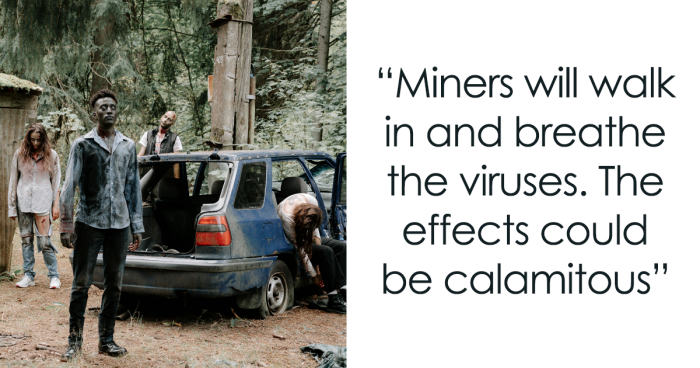
“We Face A Tangible Threat”: Scientists Speak About “Zombie Viruses” That Could Spark Pandemic
Melting Arctic ice in Siberia may release ancient “zombie” viruses, posing a potential global health crisis, leading scientists have recently warned. Geneticist Jean-Michel Claverie, professor emeritus of medicine and genomics at Aix-Marseille University, told The Guardian: “We now face a tangible threat, and we need to be prepared to deal with it. It is as simple as that.”
- Melting Arctic ice in Siberia may release ancient “zombie” viruses, posing a potential global health crisis
- Permafrost is any ground that remains completely frozen, 32°F (0°C) or colder, for at least two years straight
- Experts have been collaborating with the University of the Arctic on organizing a surveillance network to help minimize a potential outbreak
- The zombie viruses, scientifically recognized as Methuselah microbes, are capable of remaining viable for tens of thousands of years encased in the frozen soil
The World Wide Fund for Nature (WWF) has already reported that the Arctic’s average temperature has risen at a rate three times higher than the global average and is the region with the highest rate of average temperature change.
Melting Arctic ice in Siberia may release ancient “zombie” viruses, posing a potential global health crisis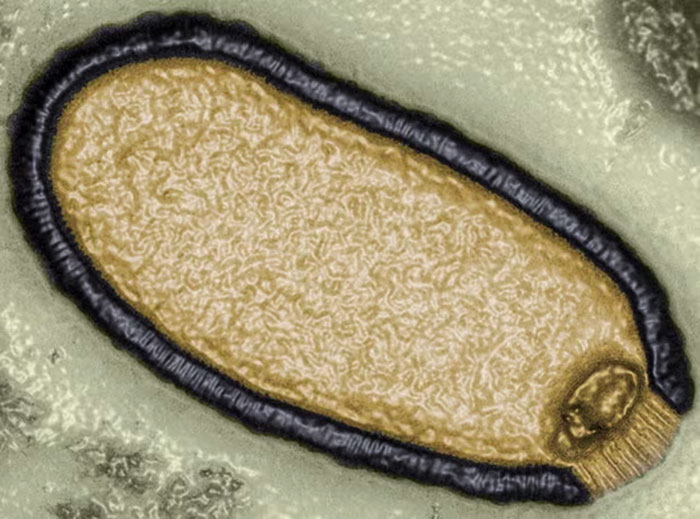
Image credits: Jean-Michel Claverie/IGS/CNRS-AM
Experts have reportedly been collaborating with the University of the Arctic, an international educational and research cooperative, on organizing a surveillance network to assist with determining cases of diseases caused by the ancient micro-organisms, as early as possible, to avoid their spread spiraling out of control, the New York Post reported.
The monitoring network would supply quarantine facilities and medical services for those potentially infected by those zombie viruses to help minimize a potential outbreak, including preventing contagious patients from leaving the region, as per The Post.
The zombie viruses, scientifically recognized as Methuselah microbes, are reportedly capable of remaining viable for tens of thousands of years encased in the frozen soil, which covers nearly 20% of the Earth’s northern hemisphere.
Permafrost is any ground that remains completely frozen, 32°F (0°C) or colder, for at least two years straight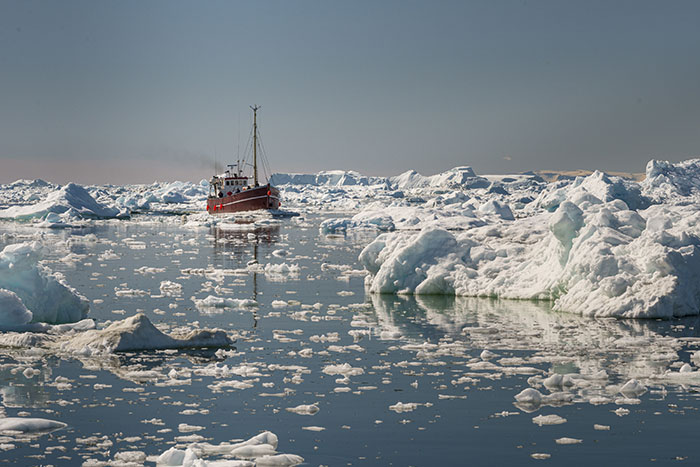
Image credits: Freepik
Professor Claverie said: “The crucial part about permafrost is that it is cold, dark, and lacks oxygen, which is perfect for preserving biological material.
“You could put a yogurt in permafrost, and it might still be edible 50,000 years later.”
According to NASA, permafrost is any ground that remains completely frozen, 32°F (0°C) or colder, for at least two years straight.
Experts have been collaborating with the University of the Arctic on organizing a surveillance network to help minimize a potential outbreak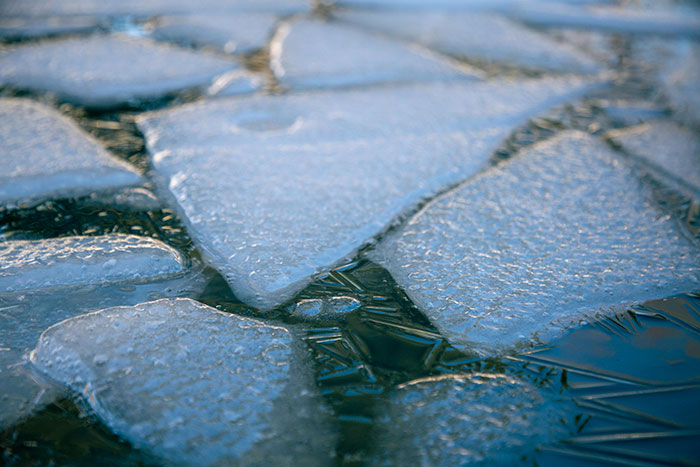
Image credits: James Cheney
The geneticist also explained that the disappearance of Arctic sea ice, caused by global warming, posed a massive risk to human health, and added: “That is allowing increases in shipping, traffic, and industrial development in Siberia.
“Huge mining operations are being planned and are going to drive vast holes into the deep permafrost to extract oil and ores.
“Those operations will release vast amounts of pathogens that still thrive there. Miners will walk in and breathe the viruses. The effects could be calamitous.”
“We now face a tangible threat and we need to be prepared to deal with it. It is as simple as that,” geneticist Jean-Michel Claverie said
Image credits: NASEM Health and Medicine Division
Scientists reportedly believe that the deepest layers of permafrost could be preserving viruses that inhabited the Earth up to a million years ago, meaning long before humans’ most ancient ancestors, who are believed to have made their first appearance on the planet some 300,000 years ago.
As a result, if there were to be a zombie virus outbreak, we would have no natural immunity to defend ourselves against it.
Professor Claverie explained: “Our immune systems may have never been in contact with some of those microbes, and that is another worry.
“The scenario of an unknown virus once infecting a Neanderthal coming back at us, although unlikely, has become a real possibility.”
The zombie viruses, scientifically recognized as Methuselah microbes, are capable of remaining viable for tens of thousands of years encased in the frozen soil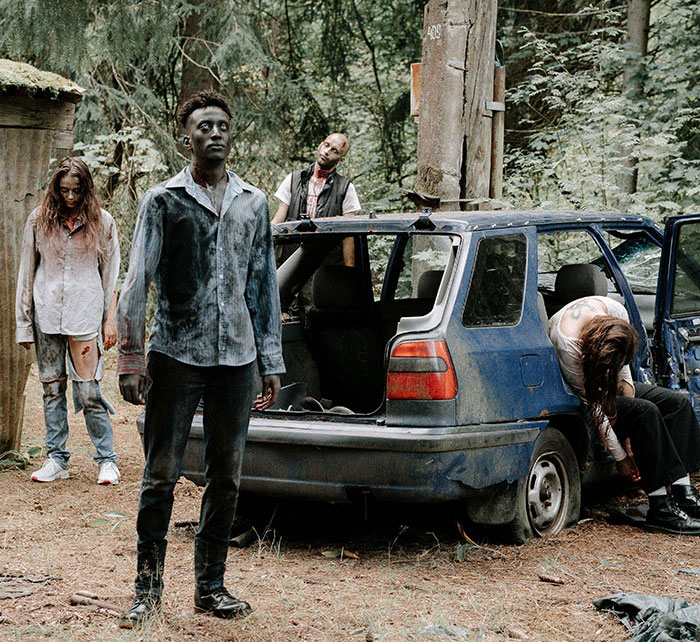
Image credits: cottonbro studio
A lot of mystery surrounds the extinction of Neanderthals, with hypotheses including violence, transmission of diseases from modern humans to which Neanderthals had no immunity, competitive replacement, extinction by interbreeding with early modern human populations, natural catastrophes, climate change, and inbreeding depression.
Despite the chances of such prehistoric organisms breaking out of their frozen habitat in the most remote regions of Earth to start a new global pandemic remaining unlikely, virologists believe there’s at least some room for concern, as per The Post.
Virologist Marion Koopmans of the Erasmus Medical Center in Rotterdam revealed: “We don’t know what viruses are lying out there in the permafrost, but I think there is a real risk that there might be one capable of triggering a disease outbreak, say of an ancient form of polio.
“We have to assume that something like this could happen.”
“Here we go again,” a reader quipped
14Kviews
Share on FacebookExplore more of these tags
You might wanna mention somewhere that they call them zombie viruses NOT because they’re gonna make people into zombies and start the zombie apocalypse, but because the viruses themselves are being ‘resurrected’. *rolls eyes*
Meanwhile there could be the alternative interpretation of being named so because we only have to face that problem thanks to lots of braindead people.
Load More Replies...This is very alarmist journalism. Yes, there are scientists researching the subject, but it is a niche problem and is considered one of the least likely sources of a pandemic problem. Having proper procedures in place for a worst case scenario does not mean that the scenario is considered likely. The most likely problem is going to be pockets of anthrax released by the millions of dead animals that are frozen in the ice. If these animals are thawed, the anthrax can spread to animals in the local area and wipe out substantial numbers. This is already happening and is a major concern for wild reindeer and saiga populations.
Agreed -- there's also the presence of other factors to make something the next pandemic: large numbers of people engaged in intensive exploitation of a given biome (so a disease makes the animal-to-human and human-to-human jumps), and high volume travel to spread a novel pathogen. Permafrost regions have neither of these, so while zombie viruses are a potential risk, there are others that I would rank higher.
Load More Replies...If these zombie viruses are looking for brains they'll be disappointed by a large portion of humanity
You might wanna mention somewhere that they call them zombie viruses NOT because they’re gonna make people into zombies and start the zombie apocalypse, but because the viruses themselves are being ‘resurrected’. *rolls eyes*
Meanwhile there could be the alternative interpretation of being named so because we only have to face that problem thanks to lots of braindead people.
Load More Replies...This is very alarmist journalism. Yes, there are scientists researching the subject, but it is a niche problem and is considered one of the least likely sources of a pandemic problem. Having proper procedures in place for a worst case scenario does not mean that the scenario is considered likely. The most likely problem is going to be pockets of anthrax released by the millions of dead animals that are frozen in the ice. If these animals are thawed, the anthrax can spread to animals in the local area and wipe out substantial numbers. This is already happening and is a major concern for wild reindeer and saiga populations.
Agreed -- there's also the presence of other factors to make something the next pandemic: large numbers of people engaged in intensive exploitation of a given biome (so a disease makes the animal-to-human and human-to-human jumps), and high volume travel to spread a novel pathogen. Permafrost regions have neither of these, so while zombie viruses are a potential risk, there are others that I would rank higher.
Load More Replies...If these zombie viruses are looking for brains they'll be disappointed by a large portion of humanity

 Dark Mode
Dark Mode 

 No fees, cancel anytime
No fees, cancel anytime 































































22
26